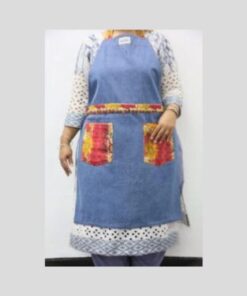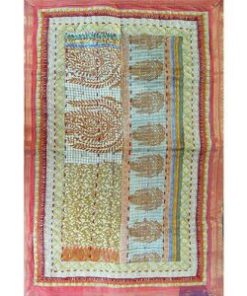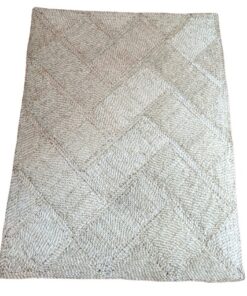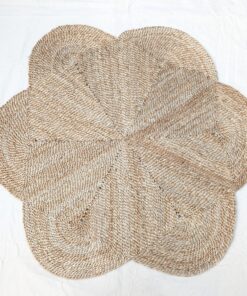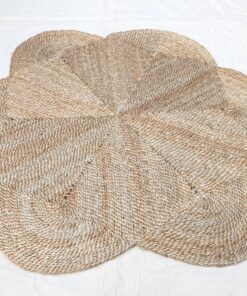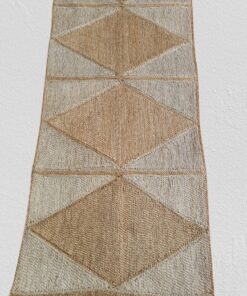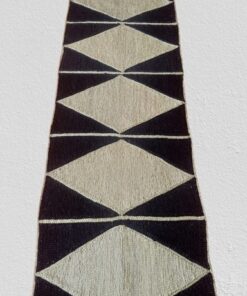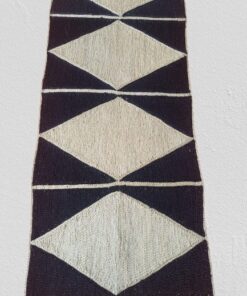
Recycled sari curtains have become one of the most beloved choices for people who want a home that feels warm, colorful, and genuinely meaningful.
These curtains are created from pre-loved Indian saris and transformed by skilled artisans into vibrant window décor. They appeal to homeowners who value sustainability, culture, and craftsmanship—all rolled into a single beautiful product.
In this guide, readers will learn what makes these curtains special, how they’re made, and how to choose ones that fit their style. It’s a friendly journey through design, culture, and ethical shopping—with plenty of practical tips along the way.
What Are Recycled Sari Curtains?
Table of Contents
- The Origin and Cultural Significance of the Indian Sari
- How Old Saris Are Transformed Into Curtains
- Types of Recycled Sari Curtains Available
- Sustainable and Eco-Friendly Benefits
- Ethical and Fair-Trade Production
- Unique Aesthetic Appeal
- Sourcing Vintage and Pre-Loved Saris
- Cleaning, Preparing, and Sorting the Fabric
- Hand-Stitching, Quilting, and Finishing Details
- Fair Trade Products from BaSE Bangladesh
- Apron – Denim With Upcycled Sari
- Apron – On My Shoulders
- Apron – Upcycled Sari
- B/W Table Runner Roses
- Baradal Carpet
- BaSE Jute Carpet
- BaSE-55004 Apron – sewing is believing
- BaSE-55009 Apron – sooner or later (Black Napkin)
- BaSE-64006a Twin Flower Mat
- BaSE-64015a Jute Diamond Runner (White&Red)
- BaSE-64015b Jute Diamond Runner (White&Black)
- BaSE‐64010E Shahi Round Rug
- Matching Colors and Patterns to Your Room
- Choosing the Right Curtain Length and Style
- Ideal Rooms for Sari Curtains
- Pairing With Furniture and Accessories
- Layering Curtains for Texture
- Mixing Modern and Traditional Décor Elements
- Cleaning Guidelines for Delicate Fabrics
- Sun Protection and Fabric Longevity
- Repairing and Upcycling Old Sari Curtains Again
- Fair-Trade and Ethical Artisan Brands
- Online Marketplaces to Explore
- What to Look for Before Buying
- Pros
- Cons
- When They’re a Perfect Fit
- When to Consider Alternatives
The Origin and Cultural Significance of the Indian Sari
The traditional Indian sari is more than just clothing—it carries heritage, artistry, and sometimes generations of family memories. A sari is typically made from silk, cotton, or viscose and may feature intricate embroidery, block prints, or handwoven patterns. When a sari has lived a full life, instead of being discarded, it can be lovingly transformed into textile art for the home.
You can read more about saris and their cultural background on the Wikipedia Sari Page.
How Old Saris Are Transformed Into Curtains
The upcycling process starts by sourcing vintage saris from local Indian communities. Experienced artisans examine each piece, repair any worn sections, and combine complementary fabrics to create colorful, durable panels. These handmade window coverings bring together tradition and modern utility while reducing waste.
Types of Recycled Sari Curtains Available
Depending on the maker, you’ll find several styles, including:
- Patchwork sari curtains: A mosaic of vibrant sari scraps
- Single-panel sari drapes: Lightweight and flowing
- Bohemian-style curtains: Perfect for eclectic or artistic homes
- Vintage sari drapes: Featuring older patterns and subtle aged beauty
Why Choose Recycled Sari Curtains for Your Home?
Sustainable and Eco-Friendly Benefits
Choosing these curtains means actively supporting greener living. Each panel keeps usable fabric out of landfills and minimizes the need for new textile production. According to the U.S. Environmental Protection Agency, textile waste is one of the fastest-growing waste streams—making upcycling a smart and meaningful choice.
(Reference: https://www.epa.gov/facts-and-figures-about-materials-waste-and-recycling)
Ethical and Fair-Trade Production
Most recycled sari curtains come from small artisan groups or fair-trade organizations. Purchasing from these makers ensures that artisans are paid fairly and work in safe conditions. When you buy ethically sourced textiles, you’re supporting families, communities, and centuries-old craftsmanship.
Unique Aesthetic Appeal
Every recycled sari curtain is different. No two patterns match, making your home feel truly personal. The eclectic mix of textures and colors fits beautifully with bohemian, artistic, and globally inspired interiors. For more home styling ideas, check out your site’s Bohemian Home Decor Guide (internal link placeholder).
How Recycled Sari Curtains Are Made: A Behind-the-Scenes Look
Sourcing Vintage and Pre-Loved Saris
Local vendors and community groups supply saris that still have plenty of life in them. Many come from weddings, festivals, and family heirlooms.
Cleaning, Preparing, and Sorting the Fabric
Artisans wash and sun-dry the saris, then sort them by color, texture, and wear level. Only the best sections are selected for curtain panels.
Hand-Stitching, Quilting, and Finishing Details
Small stitching teams use traditional methods to sew the panels. The result is an artisanal home textile that reflects care, skill, and cultural storytelling. This slow-production method ensures better quality than mass-produced curtains.
Fair Trade Products from BaSE Bangladesh
Choosing the Right Recycled Sari Curtains for Your Space
Matching Colors and Patterns to Your Room
Bright colors bring energy, while muted tones create a soft, calming effect. Consider what your space needs—warmth, contrast, or a little drama.
Choosing the Right Curtain Length and Style
Common options include:
- Rod-pocket: Easy to install and classic
- Tab-top: Casual and modern
- Sheer sari drapes: Great for softening natural light
- Dual-panel sets: Suitable for large windows or French doors
Ideal Rooms for Sari Curtains
These curtains work beautifully in:
- Living rooms
- Creative studios
- Bedrooms
- Meditation or yoga spaces
Styling Tips for Recycled Sari Curtains
Pairing With Furniture and Accessories
Because sari curtains are detailed and colorful, they pair well with neutral furniture and natural textures like wood, jute, or rattan.
Layering Curtains for Texture
Combine a sheer sari panel with a heavier woven curtain for a luxurious layered effect.
Mixing Modern and Traditional Décor Elements
One of the joys of sari curtains is how well they blend with minimalist Scandinavian interiors or modern industrial spaces. They inject warmth, soul, and contrast without overpowering the room.
How to Care for and Maintain Recycled Sari Curtains
Cleaning Guidelines for Delicate Fabrics
Hand-washing is typically best. Use cold water and mild detergent. For silk-based sari curtains, professional cleaning ensures long life.
Sun Protection and Fabric Longevity
Keep sari curtains away from direct, harsh sunlight to prevent color fading. Sheers can be layered behind them for extra protection.
Repairing and Upcycling Old Sari Curtains Again
If your curtain eventually wears out, don’t toss it—turn it into a table runner, cushion cover, or wall hanging. Upcycling continues the fabric’s story.
Where to Buy Authentic Recycled Sari Curtains
Fair-Trade and Ethical Artisan Brands
Look for brands that provide clear information about their artisans and sourcing process. Check for fair-trade labels or artisan impact statements.
Online Marketplaces to Explore
- Etsy (independent artisans)
- Ten Thousand Villages (fair trade)
- Sustainable handmade marketplaces
What to Look for Before Buying
- Authentic sari fabric
- Transparent sourcing
- Detailed care instructions
- Photos of the actual panel, not stock patterns
Are Recycled Sari Curtains Right for You?
Pros
- Unique designs
- Environmentally friendly
- Budget-friendly compared to luxury textiles
- Supports artisan communities
Cons
- Fabric delicacy varies
- Patterns may not be uniform
- Extra care needed for long-term use
When They’re a Perfect Fit
They’re ideal for anyone who loves character-rich home décor, enjoys cultural textiles, or wants to support ethical, sustainable living.
When to Consider Alternatives
If you prefer minimal patterns, heavy blackout curtains, or a completely uniform look, sari curtains might not match your needs.
Conclusion
Recycled sari curtains bring together sustainability, elegance, and heartfelt craftsmanship—turning simple windows into statements of culture and care. Whether you’re redesigning a room or simply adding more personality to your home, these curtains offer a gorgeous, eco-conscious solution.
With thoughtful selection and care, they can stay in your home for years while supporting artisans and reducing waste. Choosing recycled sari curtains is a joyful, meaningful way to decorate responsibly.

